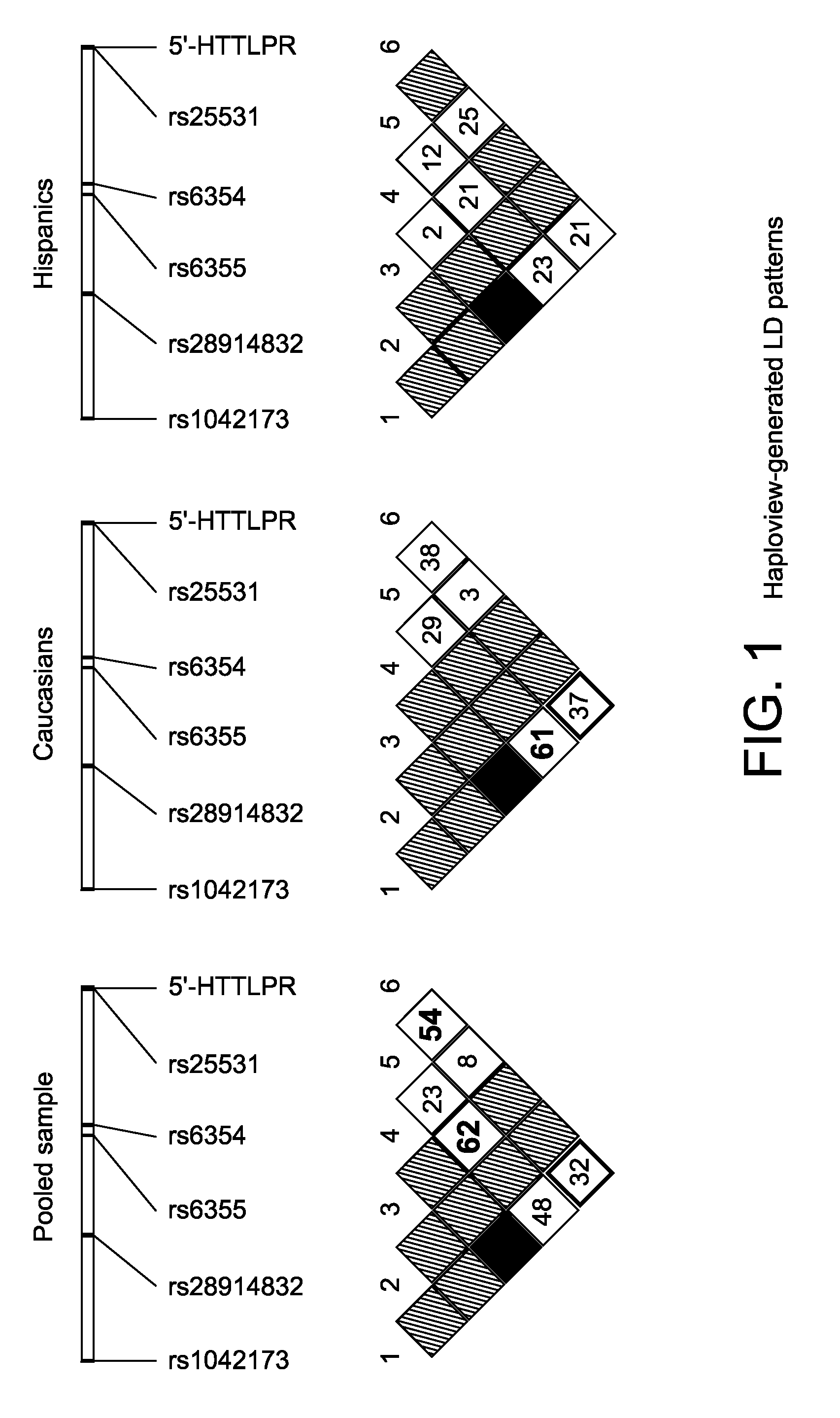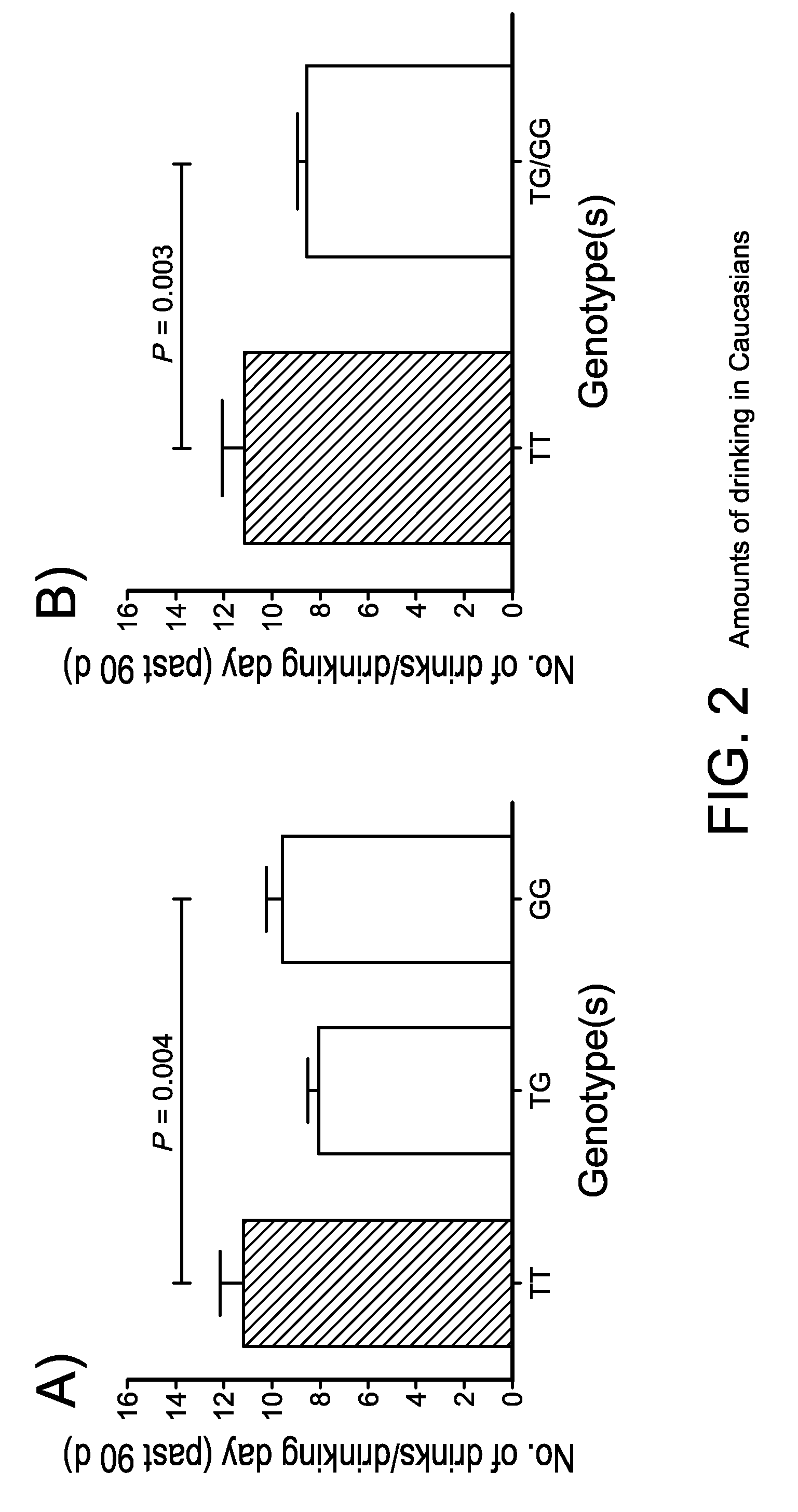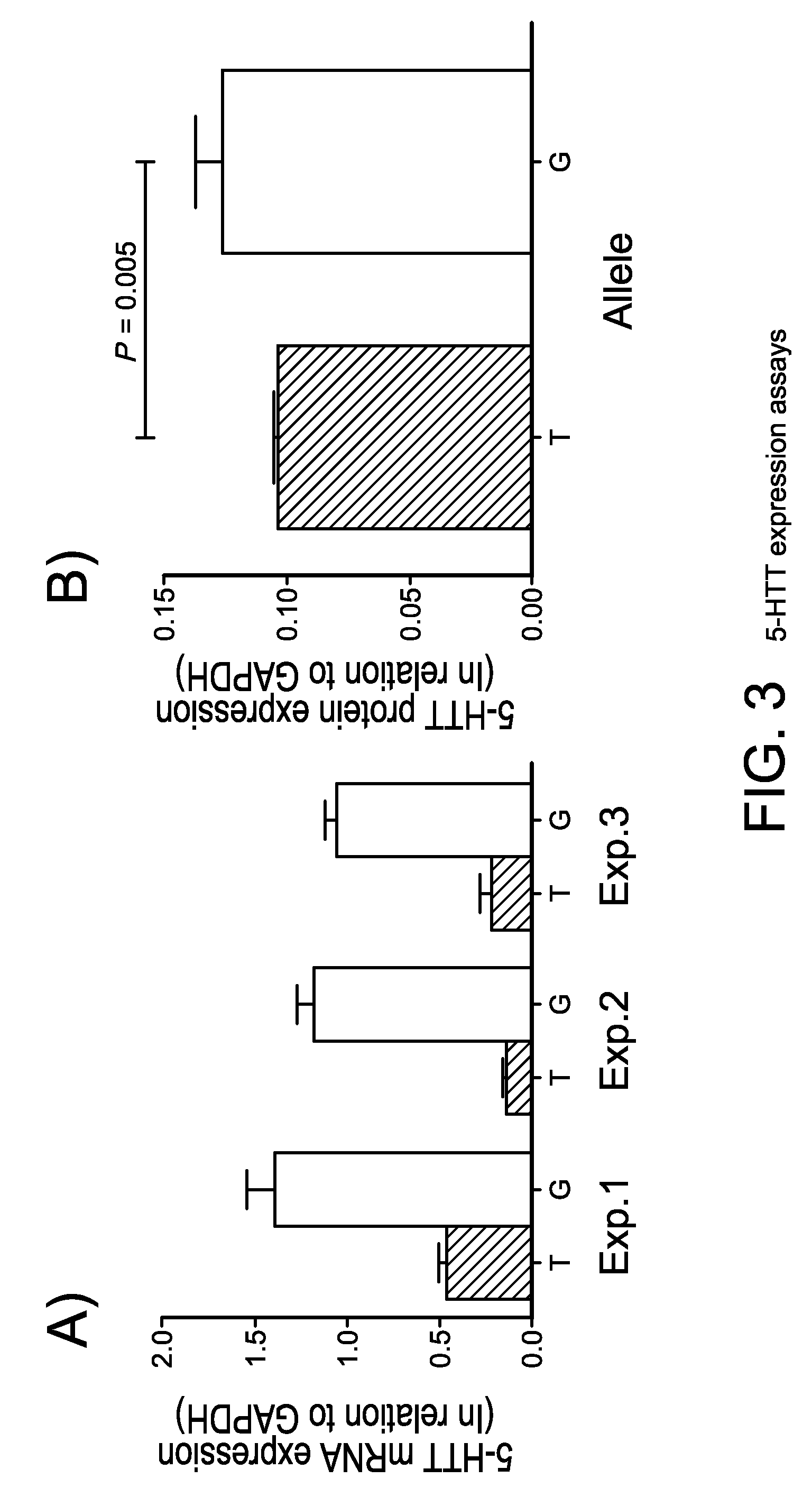Serotonin transporter gene and treatment of alcoholism
a transporter gene and alcoholism technology, applied in the field of serotonin transporter gene and treatment of alcoholism, alcohol related diseases and disorders, can solve the problems of inability to demonstrate clinical efficacy, more rigorous, well controlled, etc., and achieve the effects of reducing the average level of alcohol consumption, improving the physical or psychological sequelae, and increasing the abstinence rate of subjects
- Summary
- Abstract
- Description
- Claims
- Application Information
AI Technical Summary
Benefits of technology
Problems solved by technology
Method used
Image
Examples
embodiments
[0171]The number of serotonin transporter protein molecules in cells is affected by the amount of mature (secondary) serotonin transporter mRNA molecules expressed in that cell. The expression levels of mRNA are controlled by the 5′-HTTLPR and 3′-UTR of the SLC6A4 gene via two different mechanisms. The 5′-HTTLPR region controls the transcription rate of SLC6A4 (Heils et al., (1996) J. Neurochem. 66:2621-2624), while rs1042173 SNP in the 3′-UTR of SLC6A4 affects mature mRNA levels via post-transcriptional mechanisms (Battersby et al., (1999), J. Neurochem. 72:1384-1388; Beaudoing et al., (2000), Genome Res 10:1001-1010; Chen et al., (2006), Nat. Genet. 38:1452-145).
[0172]The 5′-HTTLPR is found to harbor several binding sites for different transcription factor molecules necessary for the regulation of transcription initiation (Hu et al., (2005), Alcohol Clin. Exp. Res. 29:8-16). Therefore, the number of nascent (primary) mRNA copies transcribed by the SLC6A4 gene and the subsequent ma...
example 1
Bibliography for Example 1
[0452]American Psychiatric Association (1994) Diagnostic and statistical manual of mental disorders, 4th ed. American Psychiatric Association, Washington, D.C.
[0453]Babor T. F., de la Fuente J. R., Saunders J., Grant M. (1992) AUDIT: The alcohol use disorders identification test, World health organization, Geneva, Switzerland.
[0454]Barrett et al., Bioinformatics, 2005, 21:263-265.
[0455]Battersby et a., J Neurochem, 1999, 72:1384-1388.
[0456]Beaudoing et al., (2000), Genome Res 10:1001-1010.
[0457]Bethea et al. (2002), Front Neuroendocrinol 23:41-100.
[0458]Bradley et al. (1997), J Neurochem 69:1356-1367.
[0459]Cargiulo T. (2007) Am J Health Syst Pharm 64(5 Suppl 3):55-11.
[0460]Chen et al. (2006) Hum Genet 120:1-21.
[0461]Chen et al. (2006) Nature Genetics 38: 1452-1456
[0462]Dundon et al. (2004) Alcohol Clin Exp Res 28(7):1065-73.
[0463]Feinn et al., (2005), Am J Med Genet B Neuropsychiatr Genet 133B(1):79-84.
[0464]Frackiewicz et al., (2000), Ann Pharmacother 34:8...
example 2
Drinking Histories in Alcohol-Use-Disordered Youth: Relationship of Platelet Serotonin Transporter Expression with Genotypes of the Serotonin Transporter
[0492]Functional control of the serotonin system is hypothesized to be regulated in part by differences in SERT (5-HTT) expression [15]. The gene responsible for encoding SERT expression has a functional polymorphism at the 5′-regulatory promoter region [16, 17]. The polymorphism contains an insertion / deletion mutation with the long (L) variant having 44 base pairs that are absent in the short (S) variant. In normal controls, the LL genotype, compared to S-carriers (i.e., SS and SL genotypes), has greater 5-HT uptake in human platelets [18], lymphoblasts [19], and greater numbers (e.g., reflecting either greater expression or less turnover) of SERT in human raphe nuclei [20]. Assuming that individuals with the LL genotype have greater SERT expression rates, these individuals would be hypothesized to have greater 5-HT uptake, lower i...
PUM
| Property | Measurement | Unit |
|---|---|---|
| pH | aaaaa | aaaaa |
| body weights | aaaaa | aaaaa |
| body weights | aaaaa | aaaaa |
Abstract
Description
Claims
Application Information
 Login to View More
Login to View More - R&D
- Intellectual Property
- Life Sciences
- Materials
- Tech Scout
- Unparalleled Data Quality
- Higher Quality Content
- 60% Fewer Hallucinations
Browse by: Latest US Patents, China's latest patents, Technical Efficacy Thesaurus, Application Domain, Technology Topic, Popular Technical Reports.
© 2025 PatSnap. All rights reserved.Legal|Privacy policy|Modern Slavery Act Transparency Statement|Sitemap|About US| Contact US: help@patsnap.com



